Matador Network's Blog, page 2218
September 1, 2014
The story of Rocky Mountain Front
Fifty years ago this September, the Wilderness Act was signed into law. It protects over 110 million acres of American land from development, including roads, mining, and other industrial activities.
Common Ground is a film by Alexandria Bombach about the fight to preserve the iconic landscapes at the edges of wild places like the Bob Marshall Wilderness in Montana — places that have been used for ranching and recreation for generations, but have recently felt the encroachment of development, especially by mineral-extraction operations.
Being from Montana, this film holds a special place for me. I’m currently seeing both the costs and benefits as gas and oil drilling booms all over the state. Common Ground beautifully lays out the arguments for both viewpoints, and comes down on the side of the reasoned approach of the Heritage Act currently awaiting passage in Congress.
In the film, Stoney Burk comments on the feelings expressed by both wilderness activists and industry with a parable: “They always say that if you have both parties unhappy in a divorce settlement, you probably got a good settlement.”
If unhappiness is what creates common ground, then legislation like the Heritage Act might just be the best way forward. 

25 picturesque US mountains
The United States has its share of incredible mountain ranges — the iconic Rockies, the misty Appalachians, the volcanic Cascades, the titans of the Hawaiian archipelago, the glacial massifs of Alaska — each with an allotment of high-profile peaks.
Yet not all mountains, even those with impressive stats, necessarily make photogenic subjects. Some are perpetually shrouded in clouds, or monochromatic and dull when viewed at a distance, or tarnished by a lackluster backdrop. Not so for the following. We’ve curated a gallery of some of the most picturesque mountains and mountain views in the US. 
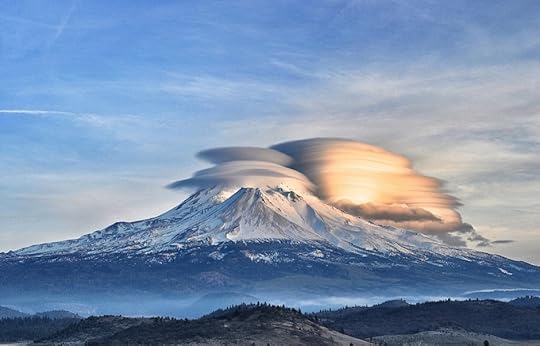
1
Mount Shasta
Mount Shasta is a volcano in Northern California near the border with Oregon. It’s picked up a reputation among New Agers as a global power center of harmonic convergence...which I’m sure is a very good thing.
Photo: Tammy Strobel
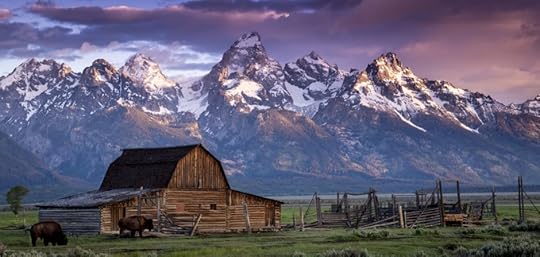
2
Grand Teton
The major peaks of the Teton Range—originally named les trois tétons, “the three breasts,” by French explorers who clearly hadn’t seen breasts for a while—snake north along the border of Wyoming and Idaho near Yellowstone National Park. Don’t visit Yellowstone without visiting Grand Teton National Park. It’s absolutely beautiful.
Photo: Gord McKenna
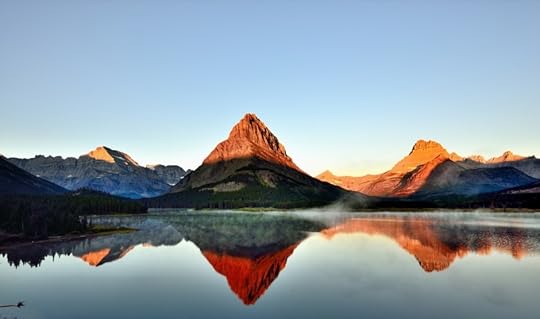
3
Glacier National Park
Glacier as a whole is one of the most scenic areas in the US. Sadly, the glaciers referred to in its name may all be gone by 2030 thanks to climate change. This photo was taken at Swiftcurrent Lake, with Mount Grinnell the foremost of the peaks being featured.
Photo: Mark Stevens
Intermission
7
23 of the bluest, clearest waters on the planet
by Joe Batruny
2
20 images of Arizona’s epic landscapes
by Joe Batruny
18
14 legendary natural wonders of South America
by Hal Amen
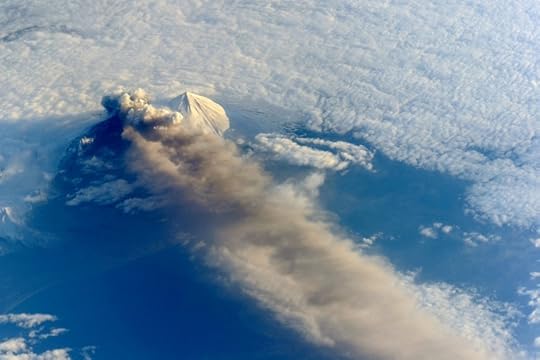
4
Pavlof Volcano
The Pavlof Volcano in Alaska’s Aleutian Islands is currently one of the most active volcanoes in the US, having erupted every few years for the last three decades. This photo was taken from a satellite in 2013.
Photo: NASA Goddard Space Flight Center
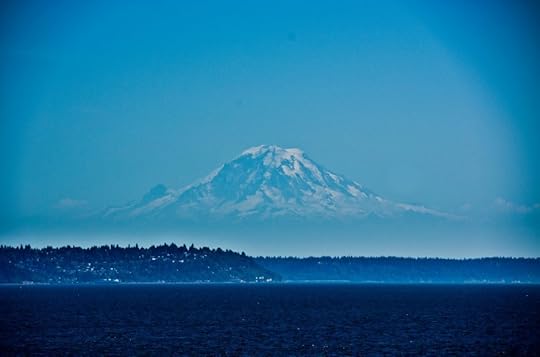
5
Mount Rainier
Just 54 miles from Seattle, Mount Rainier, an active volcano, has been deemed a “Decade Volcano,” which means it’s one of the 17 most potentially deadly volcanoes in the world.
Photo: Selbe B
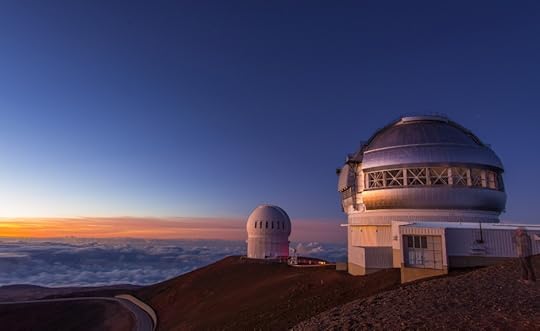
6
Mauna Kea
Mauna Kea is one of the five active volcanoes making up the Big Island of Hawaii, and the tallest. Technically speaking, from its base at the bottom of the ocean floor to its peak 4,200 meters above sea level, Mauna Kea’s taller than Everest.
Photo: Mikey O.
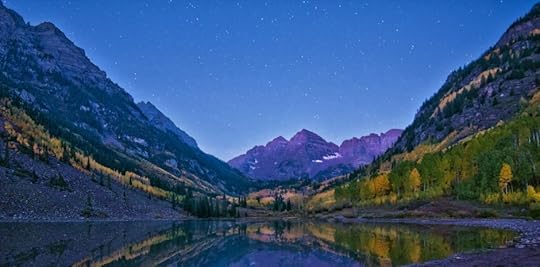
7
Maroon Bells
Though beautiful, the Maroon Bells near Aspen, Colorado have a secondary and less alluring moniker: the Deadly Bells. Climbers get into fatal accidents all too often attempting to summit these two peaks.
Photo: John Fowler
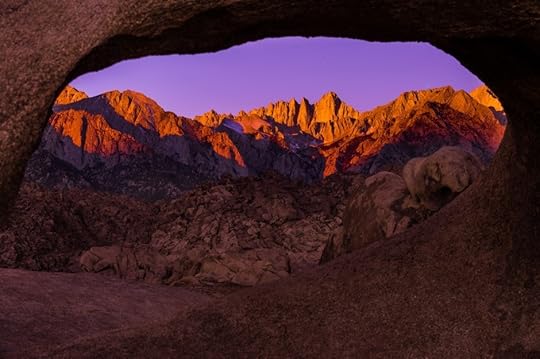
8
Mount Whitney
The highest mountain in the contiguous states, Mount Whitney practically adjoins the lowest point on the continent, just 84 miles away in Death Valley. It’s relatively easy to get to from the Bay Area or the SoCal sprawl and is one of the most-climbed mountains in the country.
Photo: Howard Ignatius
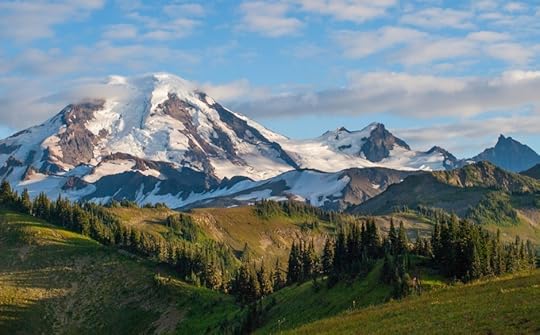
9
Mount Baker
Mount Baker is in northern Washington near the Canada border and is one of the many volcanoes in the Cascade Range. It’s currently active, though it hasn’t appeared to be near eruption since 1975. It’s also one of the snowiest places in the world.
Photo: Moss
Intermission
20
California’s giant redwoods, the tallest living things on our planet
by Hal Amen
11 pristine photos of Whitehaven Beach, Australia
by Joe Batruny
21 insanely colorful photos of Texas wildflower season
by Hal Amen
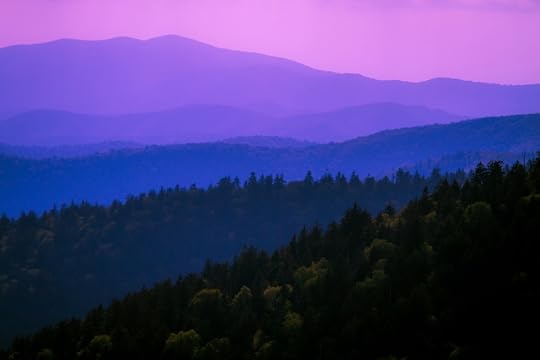
10
Great Smoky Mountains
Most of the attention on America’s mountains gets placed (fairly) on the Rockies, Sierra Nevadas, and Cascades. They’re much taller out West, but the Appalachian Mountains are believed to have once been as tall as the Rockies or the Alps before they eroded down to their present heights. The Smokies are among the most picturesque of the Appalachians.
Photo: Mr. Nixter
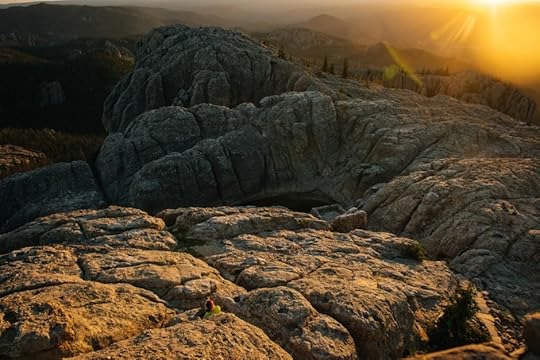
11
Harney Peak
At 7,200 feet, Harney Peak is the tallest point in both the Black Hills of South Dakota and anywhere in the country east of the Rockies.
Photo: Bradley Siefert
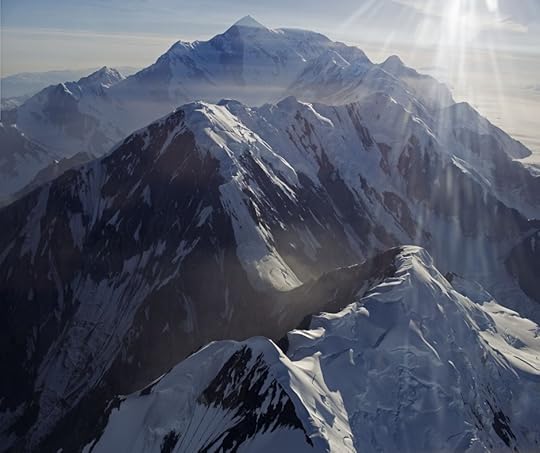
12
Mount Saint Elias
Mount Saint Elias has the dual distinction of being the second-tallest mountain in both Canada and the US, as it straddles the border. It’s not frequently climbed because it’s difficult to get to.
Photo: Richard Droker
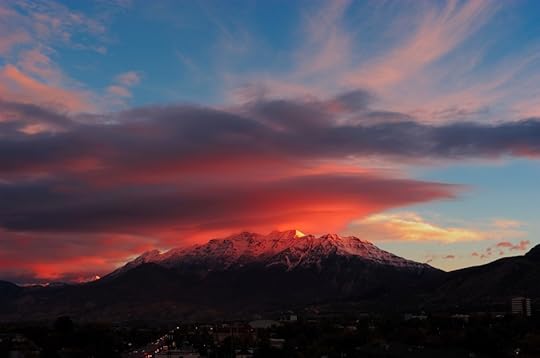
13
Mount Timpanogos
Mount Timpanogos in Utah’s Wasatch Range is fairly close to some of the largest population centers of the state, Salt Lake City and Provo. As such, it’s a very popular hiking spot.
Photo: Eric Ward
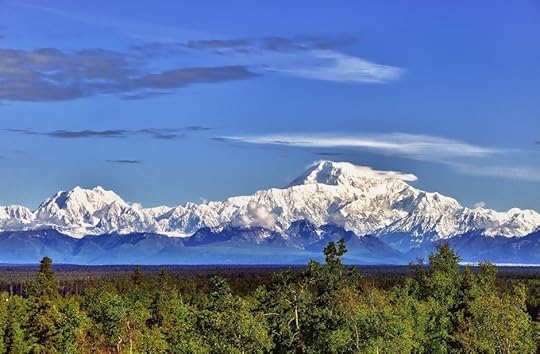
14
Denali
Also known as Mount McKinley, Denali is the tallest mountain in the US and on the North American continent. At a latitude of 63 degrees north, Denali’s severe winter conditions are analagous to those on the planet’s tallest peaks, so it’s ideal preparation for expeditions in the Himalayas. It takes two to four weeks to climb, with 58% of climbers reaching the top.
Photo: Mark Stevens
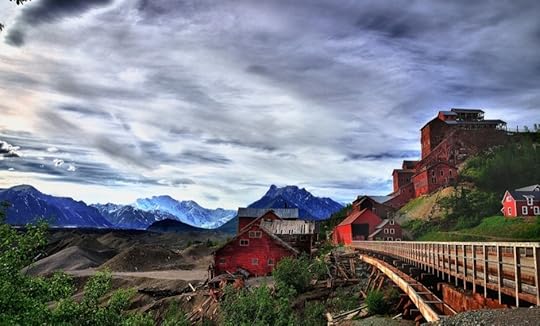
15
Wrangell-St. Elias
Wrangell-St. Elias National Park is the largest area administered by the US Parks Service, taking up a chunk of the territory where the Alaska Panhandle meets the rest of the state. Despite its incredible scope and beauty, the park only receives about 70,000 visitors a year.
Photo: Mark Stevens
Intermission
2
17 vivid landscapes to inspire your California wanderlust
by Matt Hershberger
1
30 incredible images of North American wildlife
by Matt Hershberger
Which of the ‘Big 5′ animals from each continent have you seen?
by Matt Hershberger
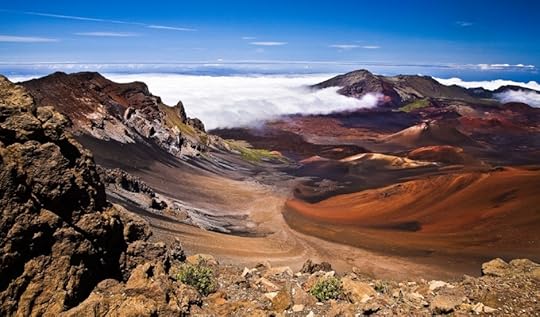
16
Haleakala
Haleakala is the volcano that makes up most of the island of Maui. It’s known among tourists for being a spectacular place to watch the sunrise.
Photo: David Schroeder
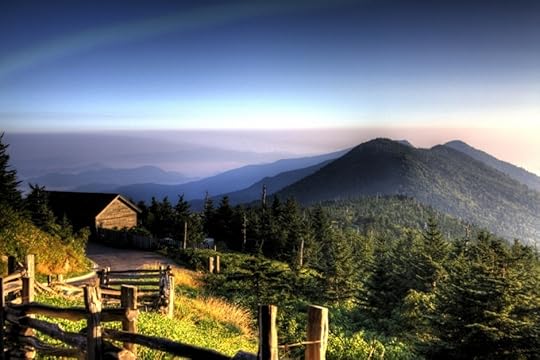
17
Mount Mitchell
The highest peak in the Appalachians is Mount Mitchell, which makes it the highest mountain east of the Mississippi. It’s part of the Black Mountain Range in North Carolina.
Photo: Kolin Toney
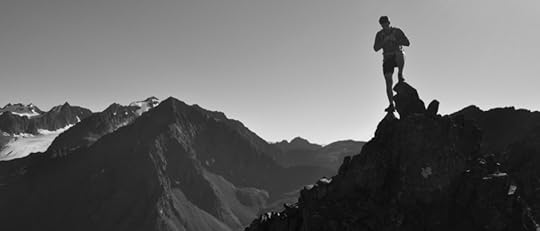
18
Hurdygurdy Peak
Hurdygurdy Peak is in the Chugach Mountains that skirt Anchorage. These are the mountains where the annual World Extreme Skiing Championships are held.
Photo: Paxson Woelber
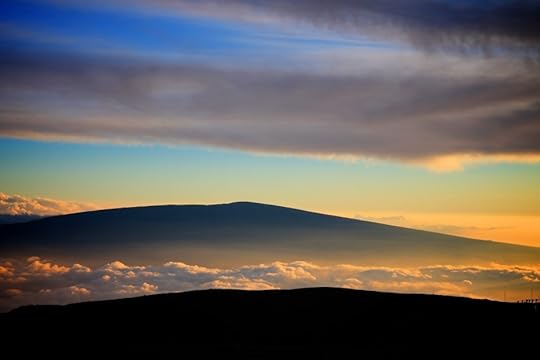
19
Mauna Loa
Mauna Loa, like Mauna Kea, is one of the volcanoes that makes up the Big Island of Hawaii. Although shorter, it outclasses its neighbor Mauna Kea by mass and volume. Plus, it’s probably better known because of the macadamia-nut brand.
Photo: Sarah Elliott
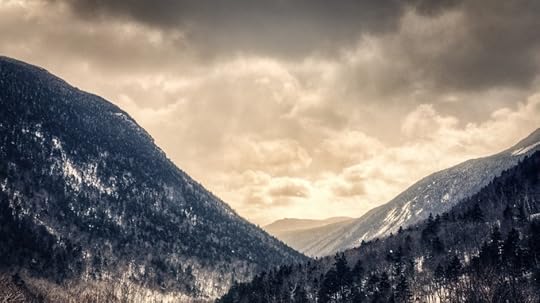
20
White Mountains
Covering a quarter of the state, the White Mountains shape the character of New Hampshire. The Appalachian Trail winds through the range, summitting 16 four-thousand-footers along the way.
Photo: Nicholas Erwin
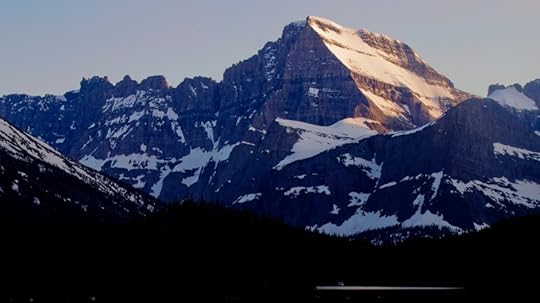
21
Mount Gould
Mount Gould in Glacier National Park flanks Grinnell Lake, making it particularly photogenic.
Photo: Thomas
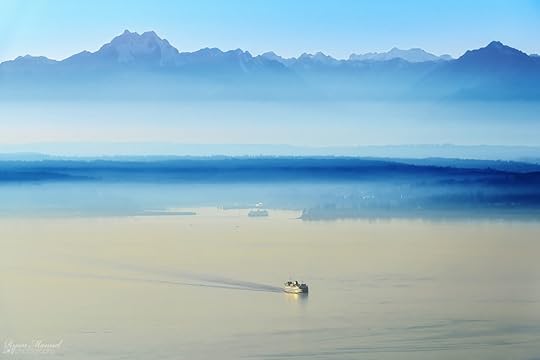
22
Olympic Mountains
Washington’s Olympic Mountains aren’t particularly high—none of them are over 8,000 feet — but they sit dramatically on the Puget Sound and tower over the nearby cities.
Photo: Ryan Manuel
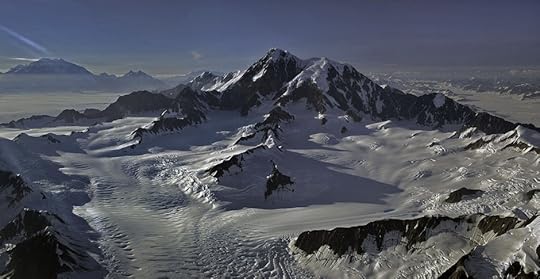
23
Mount Vancouver
Mount Vancouver is mostly in Canada, but the southernmost of its three peaks sits on the Canada-US border and is known as Good Neighbor Peak.
Photo: Richard Droker
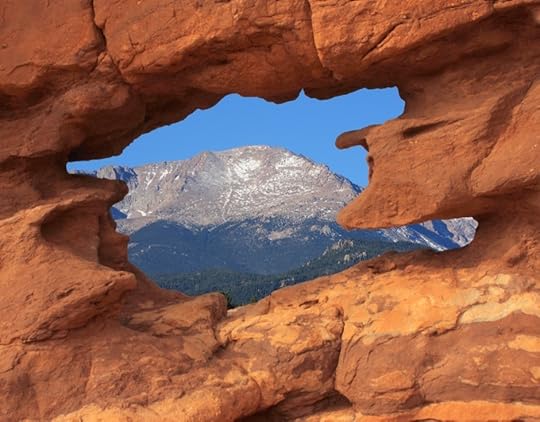
24
Pikes Peak
Pikes Peak is relatively close to Denver and you can drive to the summit, which is why you so frequently see bumper stickers bearing its name. Despite its ease of access, at 14,115 feet the summit’s a legitimate “14er.”
Photo: Beverly
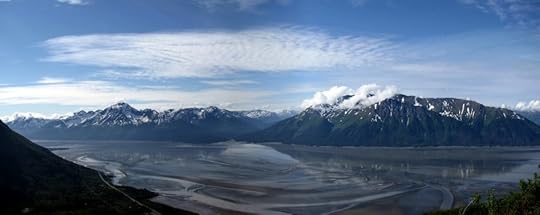
25
Kenai Mountians
The Kenai Mountains extend from the Chugach Range down to the tip of the stunning Kenai Peninsula, where this photo was taken. The range is within easy driving distance of Anchorage.
Photo: im me

August 31, 2014
Drone footage of surfers in SoCal
It’s a well-established fact by now that it’s impossible to film surfers and not make it look amazing. What’s difficult is capturing surfers in new and interesting ways.
Enter Air Reel Productions, which recently released Above the Wedge. They flew an aerial drone quadcopter over the surfers at Southern California’s famous surfing spot, the Wedge in Newport Beach, and managed to capture absolutely killer images of the surfers, bodysurfers, and bodyboarders catching massive waves and then apparently disappearing beneath them. 

Combat food waste with this new app

Photo: Wikimedia
According to the Environmental Protection Agency, Americans waste about 30-40% of their yearly food supply, despite the fact that more than 50 million Americans don’t have enough food to eat on a daily basis.
Food waste is a problem all over the world, but one company has created a mobile app to tackle the issue in the United States. The PareUp app will be launched in New York City first, where, according to the PareUp website, 6.5 billion pounds of food are thrown away daily. And that’s just in the Big Apple.
The biggest wasters of food are ironically those who profit from it: restaurants and food retailers. PareUp’s app aims to connect the individual consumer with these businesses, allowing both parties the opportunity to buy and sell food that would otherwise go to waste. So restaurants and grocers are able to sell food they would normally throw away, while consumers are offered access to quality sustenance at a discounted price.
PareUp has created a win-win for all parties involved. And with food waste taking up the vast majority of space in America’s landfills, the environment wins as well.
So why is this food being thrown out in the first place? PareUp says that “retailers often toss food to protect their brands.” When a vegetable is misshapen, it doesn’t even make it onto the floor. When a sell-by date is approaching, the item is pulled from the shelf and tossed in the dumpster out back. Sometimes food is chucked solely because there isn’t enough room left on the display shelves. In most cases, this food is still entirely edible. “It’s still delicious,” PareUp says.
The obvious solution for this waste is to donate it to those in need through local shelters and food banks. But the food-safety regulations for many of these organizations disallow them from accepting it. Additionally, it often just doesn’t make sense for them in terms of the resources that go into collection and transportation.
Personally, I also think the donation solution reveals a bit of flawed, privileged thinking. Donating food to those in need is usually a positive idea, but if this “unusable” food isn’t good enough for the general public to consume — in the eyes of most restaurants, retailers, and members of society — why is it then okay for the underprivileged to consume? It reminds me of that Seinfeld episode where Elaine doesn’t understand why the homeless shelter turned down her muffin stumps, left over from her Top of the Muffin to You! enterprise. Why should the homeless be robbed of the best part of the muffin?
The PareUp app seems to solve a lot of these donation woes by putting the responsibility in the consumer’s hands. It’s their choice if they want to purchase food that would otherwise not be served or sold on the business floor. It also offers a fairly private way of purchasing discounted food, which sadly is a sign of belonging to a “lower class” and a source of shame and embarrassment in Western society.
If this app comes to my area, I’ll certainly use it proudly. As a person who grew up where poverty and hunger were very present, I’m happy that PareUp is tackling the status quo and making use of a resource that’s quickly going to waste. 

August 30, 2014
Meet the youngest RTW sailor ever
In 2010, Laura Dekker, a 14-year-old Dutch girl, tried to become the youngest person to successfully sail around the world. She’d already been held up for over a year by Dutch authorities who thought it was unsafe, but in 2012, she finally completed her circumnavigation.
Jillian Schlesinger, a filmmaker, managed to follow her for much of the trip, and has now turned the voyage into a feature-length documentary called Maidentrip.
This video is just a short clip from the movie, but it features fantastic footage of Dekker sailing into French Polynesia and trying to explain to a customs bureaucrat why she doesn’t know when she’ll be leaving the islands: “I don’t know, it’s a sailboat. You go when the wind is good.” 

20 of the world's best aquariums
IF YOU’VE EVER OWNED A PERSONAL AQUARIUM, you know how hard it can be to maintain. You’ve got to keep the water clean, you’ve got to make sure it has the right level of saltiness, and you need to ensure the fish you put into it won’t eat each other. I once made the mistake of putting a goldfish into a tank with a Siamese fighting fish (also known as a betta). When I woke up the next morning, the betta was gone, and my goldfish was incredibly fat. Even if the pet-store clerk hadn’t led me astray, it was not the outcome I would have expected for that fight.
So naturally, it’s infinitely more impressive when major aquariums put together million-gallon tanks with thousands of fish and hundreds of different species. It’s a feat of planning we typically don’t recognize, beyond looking at the fish and saying, “Oooh, that’s pretty!”
And with our oceans in the state they are, these aquariums are often hubs for research and conservation projects, spearheading the movements to save our seas — while others may be mistreating their animals or obtaining them through sketchy means. The list below includes both. 
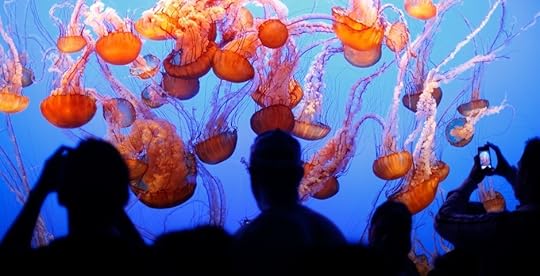
1
Monterey Bay Aquarium
The Monterey Bay Aquarium in California does a huge amount of marine research, and was the first aquarium to successfully keep a great white shark in captivity. It's also one of the few places where you can see an ocean sunfish.
Photo: Angelo De Santis

2
Hotel Atlantis Dubai
The Hotel Atlantis in Dubai offers these "underwater" rooms built right up against huge aquarium tanks. It’s a cool view, but I’d be terrified of it breaking in my sleep...
Photo: Werner Bayer

3
Okinawa Churaumi
The Kuroshio Sea is the main tank at the Okinawa Churaumi Aquarium in Japan. It held the record of the world’s largest tank when it opened in 2002, but has since been surpassed by the Georgia Aquarium.
Photo: Sonotoki
Intermission
Which of the ‘Big 5′ animals from each continent have you seen?
by Matt Hershberger
10
40 of the world’s most impressive “second cities”
by Alex Scola
2
51 natural wonders so amazing it’s hard to believe they exist
by Matt Hershberger

4
New England Aquarium
The New England Aquarium in Boston also doubles as a whale watching spot because
of its location near the harbor, and many of its staff participate in marine animal rescue operations.
Photo: Theresa

5
L'Oceanogràfic
L'Oceanogràfic is in Valencia, Spain, and has a total capacity of up to 11 million gallons of water in all of its tanks. It also happens to be a particularly beautiful building.
Photo: Nickolay Pirogov

6
Aquarium of Genoa
The Aquarium of Genoa is the largest in Italy, and has a number of different marine habitats, including North Atlantic, Caribbean, and Ligurian Sea tanks.
Photo: Castgen

7
Chimelong Ocean Kingdom
The Chimelong Ocean Kingdom in Hengqin, China, broke five world records—including largest aquarium—when it opened earlier this year. Unfortunately, it’s come under a lot of criticism for its methods of obtaining the animals.
Photo: Sina

8
Deep Aquarium
The Deep is an aquarium in Hull, England, that is the world’s only “submarium.” It also functions as a charity and a research center, and happens to be pretty beautiful from the outside as well.
Photo: Adrian S Jones

9
AquaDom Berlin
The AquaDom is a cylindrical, 25-meter-tall aquarium in the Radisson Blu Hotel in Berlin. Inside the cylinder is a glass elevator.
Photo: Jamie Mead
Intermission
89 of the world’s most mind-bending 3D chalk drawings
by Alex Scola
3
21 examples of you-fall-you-die photography with the world’s most insane skywalkers
by Darmon Richter
SharkCam stands up to some of the world’s most dangerous predators
by Matt Hershberger

10
SeaWorld
Probably the most (in)famous aquarium in the world, SeaWorld is known for its shows with marine animals, particularly killer whales. It came under a ton of criticism for its treatment of those whales recently, thanks to the documentary Blackfish.
Photo: Chris A

11
Hilton Maldives Undersea Restaurant
The Hilton in the Maldives has both underwater suites and an underwater restaurant. The Maldives is actually at risk of sinking into the sea, due to climate change and sea level rise, so this might be the way the whole country is going.
Photo: Christian Jensen

12
uShaka Marine World
The uShaka Marine World in Durban, South Africa, is the largest aquarium on the African continent. It’s also connected to a water park and has SeaWorld-like shows.
Photo: Cat

13
The aquarium bed
Okay, so it’s not the largest by any measure, but I would’ve killed as a five-year-old to fall asleep with fish swimming over my head. And the sound of the aquarium must be insanely soothing.
Photo: Wicker Paradise

14
TurkuaZoo
The TurkuaZoo in Istanbul, Turkey, has the largest aquarium in Europe. It also allows visitors to go diving with sharks.
Photo: Pixage

15
Shedd Aquarium
The Shedd Aquarium has been in Chicago since 1930, and for a long time it was the largest aquarium in the world, though it has since been dwarfed by a lot of these other spots.
Photo: Smart Destinations
Intermission
17
75 places so colorful it’s hard to believe they’re real [pics]
by Alex Scola
45 eerily beautiful abandoned places [pics]
by Claire Litton-Cohn
16
44 surreal scenes from Australia’s Great Barrier Reef
by Scott Sporleder

16
Georgia Aquarium
The Georgia Aquarium in Atlanta was the largest in the world when it opened in 2005, and it remains the largest in the United States. It's home to 500 different species and holds a total of 10 million gallons of water.
Photo: Melvin "Buddy" Baker

17
Newport Aquarium
The Newport Aquarium in Northern Kentucky is probably best known for its shark petting exhibits.
Photo: Ken Colwell

18
Dubai Mall Aquarium
The largest mall in the world also has one of the largest aquariums in the world—the Dubai Mall Aquarium has a single tank with 33,000 animals in it.
Photo: Salis

19
Shanghai Ocean Aquarium
The Shanghai Ocean Aquarium has one of the longest underwater tunnels in the world, and is located right next to the Oriental Pearl skyscraper in Pudong.
Photo: Aapo Haapanen

20
National Aquarium Baltimore
The beautiful National Aquarium in Baltimore Harbor is technically partnered with the National Aquarium in Washington DC, but Baltimore’s aquarium is significantly cooler. It’s home to 750 species and can hold 2.2 million gallons of water.
Photo: Jeff Kubina

August 29, 2014
13 signs you're an au pair

Photo: Cams
1. You swear you’ll never have kids.
All the tantrums, fights, unbelievable requests, and time putting children before yourself has you swearing you’ll never have kids. It also has you in awe of your own parents who raised you without the help of an au pair. How did they do it without going completely insane?
2. You’ve forgotten what it’s like to have a 9-5 job.
Routine? Nope, not as an au pair. Your wakeup time changes more regularly than Katy Perry’s hair, and you’ve morphed into the most flexible person on the planet. “Very adaptable to change” should be bolded and underlined three times on your resume.
3. You know more parents than people your age.
The sad truth of au pairing is that a large part of your social life revolves around organizing kids’ play dates. You have more phone numbers of fathers than guys your own age, and a trip to the supermarket can result in an impromptu Mothers’ Club meeting in the cereal aisle.
4. You’ve responded to “mum” or “dad.”
If your host parents are the type to spend more time at work than with their children, the whole “whoops, I called you mum” thing is bound to happen. Best thing to do is laugh it off and move on. Like, to another job.
5. You’ve seen Frozen at least 18 times and know all the words to all the songs.
Ah, Frozen, the Disney movie of the year. Admittedly it’s one of Disney’s best, but after watching it every afternoon for a month, even cute little Olaf can start to drive you bonkers.
That said, the fact that you can sit down and watch a movie while your friends back home are probably slaving away at some soul-crushing job definitely makes you feel a little smug.
6. A big night out consists of bitching about your host families with your au pair friends while seeing how far you can stretch five euros.
When moving to a new country or city to au pair, the easiest friends to make are other au pairs. Though as time goes on, your conversations tend to focus on whatever crazy request your host parents made of you, or how many beers you can get with your last bit of pay. It can get monotonous, but then again, it makes the week go faster.
7. Your handbag resembles a war zone complete with snacks, toys, makeup, at least two phones, several bottles of water, plenty of tissues, and the kitchen sink.
Mary Poppins and her bottomless bag is pretty much on point.
8. You think about what to make for dinner before you even finish breakfast.
Chances are, by the end of your au pair stint you’ll be able to pull off a nutritious dinner for five that fulfills all dietary requirements and personal tastes with absolutely no leftovers. Stepford Wives move over!
9. Your social life is predicated on whether you have to babysit or not.
Nothing like babysitting on a Saturday night to squash your party plans. Or worse, weekend mornings. After trying to babysit three young children with a roaring hangover, you’ve learned to be responsible, stay at home, and give your liver a break.
10. You secretly love taking the kids out to the movies, bowling alley, theme park, etc. because you go for free.
The best perk of being an au pair is all the cool stuff you get to do for free. Sure you’re babysitting, but waiting in line for a photo with a Disney princess isn’t as lame when you’re with a 10-year-old.
Your workday can consist of playing at the beach or going to the zoo. One girl I knew got flown from the Netherlands to America to join the family holiday. Now that’s a perk!
11. You’ve employed the “count to three” threat.
The age-old trick that was used on you as a youngster now works a charm when the kids are acting up. Much like when you were a child, your kids are tempted to see what happens after three but are too chicken to find out.
12. You refer to the children you look after as your own.
You spend the majority of your day with them, live with them, feed them, bathe them, and entertain them. You know you’ve au paired too long when you utter phrases along the lines of “My girl has this new thing of only eating carrots and cheese,” or “My kids just got the new Xbox game” without thinking it sounds weird.
13. You learned the language from your kids.
Moving to a new country with a whole new language can be daunting. Most opt for a quick language course to get them through. However, your best (and freest) teachers are the children you look after. Sure, you might not be able to ask how to open a bank account, but you can ask to leave the table and watch TV with perfect fluency. 

See NYC in slow motion
New York City isn’t known for being a slow city. No one has ever un-ironically called it that. So it’s especially impressive that the thought of slowing down the fast-paced life of NYC even crossed filmmaker Tim Sessler’s mind.
Sessler’s resulting short film, Streets, is an incredible take on life in New York, with all the fast elements slowed down to super slow motion. Whether it’s water balloon fights, running dogs, or kids crossing the street, Sessler’s slow look at a fast city is incredible. Give it a watch. 

3 places altered by climate change

Photo: eutrophication&hypoxia
We like to think of climate change as a future event, something that hasn’t quite hit yet, that we can still stop when we decide to set our minds to it. This isn’t the case.
The planet’s already experiencing irreversible effects of climate change. While some of the hardest-impacted places are poor and remote — like the Pacific Islands swallowed by the sea, or the villages of Darfur torn by climate-influenced conflicts — others are much more prominent to us Westerners. Natural wonders, major cities, and cultural icons are all at risk. Here are just three examples, permanently transformed by climate change.
New Orleans
It’s been nearly a decade since Hurricane Katrina hit New Orleans, and there are still areas, like the devastated Lower Ninth Ward, that aren’t close to fully recovering. Yes, the city’s full of incredible, resilient people — and that much will never change — but it’ll likely bear the scars of Katrina forever. And it remains vulnerable to future storms.
It’s impossible to confirm that Hurricane Katrina was caused by climate change, of course. Catastrophic hurricanes have been happening since long before humans started influencing their environments. But, since warm ocean waters are fuel for hurricanes and typhoons, the warming climate is expected to increase the frequency and intensity of such storms by supplying conditions conducive to their formation.
Storms of the century may become more like storms of the decade. In the US alone, with Katrina and Sandy, we’ve already had two abnormally catastrophic storms in the past ten years. New Orleans and other coastal towns will continue to be susceptible to storms and floods from now on.
The Great Barrier Reef
Not all the carbon dioxide we release into the atmosphere stays in the atmosphere. About a third of it’s absorbed by the oceans. When carbon dioxide ends up in the sea, it acidifies the water, which detrimentally affects the shells and skeletons of ocean creatures — including coral — in a process called “bleaching.”
Coral reefs are one of the most biologically diverse and important types of ecosystems in our oceans, and we depend on them heavily as fishing grounds for the seafood industry. They also help protect our shorelines, serving as a barrier to rougher seas and their erosive forces. Bleaching is a symptom of corals becoming weaker, and as reefs die, the ecosystems built up around them die too.
Not even the world’s biggest reef — the Great Barrier Reef off the coast of Australia — is immune. According to a UN Intergovernmental Panel on Climate Change (IPCC) forecast,
“by 2050, 97 percent of the Great Barrier Reef will be bleaching yearly.” In other words, the reef will be dying. Not only is this a disaster from an ecological point of view, but less reef means less seafood on our plates and lost revenue from tourism and recreation.
Glacier National Park
While Montana’s Glacier National Park is hardly the only or the worst example of glacial melt, as one of the crown jewels in the US national park system, it’s perhaps the most conspicuous. It’s named Glacier National Park, after all. The park is beautiful with or without the glaciers, but when it was founded about 100 years ago, there were 150 glaciers within its borders. Now there are 25. By one estimate, they’ll all be gone by 2030.
The loss of glaciers isn’t anything new in terms of geologic history — icesheets advance and retreat every 40,000 to 100,000 years. But anytime someone cites this fact as a reason for regulatory inaction, gently remind them that a) we caused this and can stop it and b) if we don’t, there will consequences.
Not only do hundreds of millions around the world rely on glaciers as a water source, but roughly one in ten humans lives on a coast that could be affected by sea-level rise.
Compared to the icesheets of Greenland or Antarctica, Glacier National Park is small beans, but it’s a horrifying example of foreshadowing. 

On visiting BsAs for the first time

Photo: Gustavo Brazzalle
1. “Where are all the vegetables?”
Before you arrive, everyone will make it a point to mention how exquisite you’ll find Argentina’s steak, praising the tenedor libre restaurants around the country. And meal after meal, you’ll notice your plate is covered by large pieces of meat, leaving little room for vegetables.
Then, on a visit to the supermarket, the sticker shock you’ll experience will explain it all. Groceries, namely fruits and vegetables, are damn expensive. Suddenly, your desire for vegetables disappears.
2. “The Caminito looks much cooler in pictures.”
La Boca is where you’ll find La Bombonera, Buenos Aires’ famed stadium and home to the Boca Juniors. “Of course I have to visit.” And the Caminito, a nearby stretch of street with buildings clad in every color imaginable, will look picture-perfect. In pictures.
Upon arrival, it’ll be evident you’ve been duped. After a quick walk through the overpriced, Disneyfied block and a mediocre-at-best meal, you’ll decide it’s time to move on.
3. “We’re supposed to show up when?”
“We can’t show up to dinner on time,” your wise travel companion will tell you. “What?” It’s true — you’re supposed to show up late. On purpose. If not, you’ll be awkwardly sitting by yourself.
The first time you attempt this, you’ll still get there too early. Try two hours next time — that’s a little better.
4. “I’m ready for bed and everyone’s getting ready to go out.”
On the weekend, people will be grabbing a coffee when you’re used to brushing your teeth and taking out contact lenses. Showing up “early” means arriving at the boliche before 2am. As in many don’t open until 1:30.
“Oh, the sun’s rising now. We’re still out. This is going to take some getting used to.” On the positive side, at least you get to eat breakfast before going to bed.
5. “Wait. So wine really is cheaper than water?”
“I know hyperbole when I hear it.” Wrong. As you sit down and compare the prices of water at the pizza restaurant, the quizzical look on your face will speak volumes. Doing the calculations in your head…yes, it appears the wine is actually cheaper than the water.
Shit. Given the opportunity, you’re certainly not going to pass up a good glass of Malbec. The decision’s been made. No more water on the trip.

Photos clockwise from bottom left: « м Ħ ж », dragonflysky, Joel Richards, jamieanne
6. “I just don’t get mate.”
It seems as if everyone’s drinking it at all times of day. A simple Google search will show you how daunting the process can appear to be. Preparing the mate is one thing. Complex enough as is. Hopefully you’ll be in the presence of a gracious host who’ll handle this.
“I don’t say gracias until I’m done completely?” “I don’t stir the mate with the bombilla?” “It’s okay to make a loud slurping noise when the mate is finished?” After several chances to ingrain these customs into your mind, it’ll finally seem less intimidating.
7. “Why is everyone ‘No, no por favor‘ing me after I say thank you?”
Hearing no, por favor after saying gracias might throw you off after your first few interactions on arrival at Aeroparque Jorge Newbery. Two weeks later, you’ll be saying it to everyone who thanks you for doing anything. It’s definitely more fun than de nada.
8. “Who DOESN’T sell alfajores here?”
Everywhere you turn, every building you see, there’s a sign suggesting that alfajores are sold within. After one bite, you’re sold. While there are all different sorts, you’ll probably end up partial to the dulce de leche.
It’s said that Argentina is the largest consumer of alfajores in the world. It’s no surprise. They’re amazing. Suddenly, you’re not so confused as to why they’re sold all over. And you’re miraculously not really concerned with not getting money back for your change anymore.
9. “I don’t like fernet. This could be an issue.”
“Order a fernet and coke. Everyone drinks them.” After two sips, you’ll remember — you can’t stand black licorice. Well, good thing you’ve got all that steak and wine to take the edge off. Carry on. 

Matador Network's Blog
- Matador Network's profile
- 6 followers




